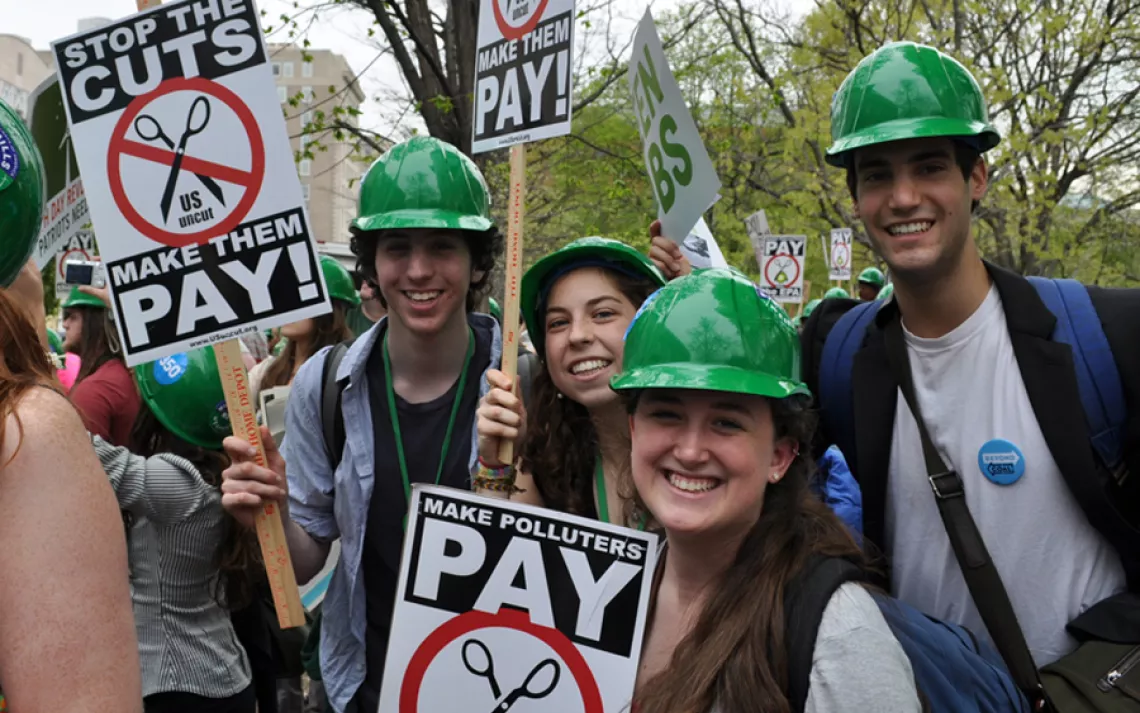The Top 10 Coolest Schools 2007
Ten that get it
10: CARNEGE MELLON UNIVERSITY
10,000 students | Pittsburgh, PA
You'd expect innovation from a school renowned for its tech programs, and Carnegie Mellon University delivers with student-designed green roofs on several buildings, what it claims was the country's first ecofriendly dorm, and a collaborative research center with a modular raised-floor system that doubles the amount of fresh air circulating in the building.
9: TUFTS UNIVERSITY
8,800 students | Medford, MA
Home of the first university environmental policy in the country, this OG (original green) school keeps itself current with solar panels on its newest residence hall, energy-saving motion sensors on campus vending machines, and an electric tractor to mow its organically tended baseball field..
8: PENNSYLVANIA STATE UNIVERSITY SYSTEM
83,700 | 24 locations
This Big Ten school gets big props for committing to a system-wide goal of LEED certification of all new buildings, a $10 million annual investment in retrofitting and efficiency, and a 17.5 percent decrease in greenhouse-gas emissions by 2012.
7: BEREA COLLEGE
1,600 students | Berea, KY
The first interracial and coeducational college in the South is staying ahead on environmental issues too. Berea College is perhaps best known (at least in sustainable circles) for its Ecovillage, a housing complex for students and their families that incorporates passive-solar design elements, heavy-duty insulation, efficient appliances and fixtures, and rainwater collection. The ideals of the Ecovillage are reflected throughout this progressive Christian college, from the dining-hall menus that feature campus-raised produce and meat to the new solar array on the roof of the Alumni Memorial Building.
6: MIDDLEBURY COLLEGE
2,350 students | Middlebury, VT
The school that spawned the national Step It Up protests against global warming is all about energy—in both senses of the word. Students lobbied hard for the $11 million biomass plant now being built, which will be a big player in making Middlebury College carbon neutral by 2016. They've also convinced residence halls to lower their thermostats two degrees in the winter; exchanged more than 2,000 incandescent lightbulbs for energy-efficient ones; and worked with the college's ski facility, the Snow Bowl, to offset its carbon dioxide emissions. Wood used in on-campus construction comes from sustainable, local forestry operations, and a ten-kilowatt wind turbine provides power to Middlebury's recycling facility, which has helped divert more than 55 percent of the college's waste since 1994.
5: DUKE UNIVERSITY
12,800 | Durham, NC
The Blue Devils are turning green, mandating certification by the U.S. Green Building Council for all new construction, improving on-campus bike trails, collecting 17 types of recyclables, and pouring money into wind and small hydropower projects.
4: UNIVERSITY OF CALIFORNIA SYSTEM
214,000 students | 10 locations
When one of the richest state's largest employers approves a system-wide green policy, the benefits are going to be big. The University of California has pledged to generate ten megawatts of renewable power by 2014, increase use of low- to zero-emission vehicles by 50 percent by 2010, and achieve zero waste by 2020 at its ten campuses. While UC Davis improves its agricultural sustainability, UCLA fights gridlock with a bicycle master plan that has increased ridership by 50 percent. The newest campus, UC Merced, received the second-highest LEED rating for its first building complex; the oldest, UC Berkeley, has a certified organic kitchen in one of its dining halls and a new major in society and environment.
3: WARREN WILSON COLLEGE
850 students | Swananoa, NC
This small Southeast star wears its environmental ethos on its sleeve and backs it up with a sustainably managed farm, garden, and forest that provide food and lumber for the campus; streetlamps that reduce light pollution; and community service as an integral part of the curriculum.
2: HARVARD UNIVERSITY
20,000 students | Cambridge, MA
This Ivy League exemplar is a front-runner in getting the most structures certified by or registered for the U.S. Green Building Council's Leadership in Energy and Environmental Design (LEED) standards. A $12 million loan fund provides interest-free financing for ecofriendly projects—such as installing motion-sensor lights in classrooms and converting a recycling truck to run on waste vegetable oil from one of the dining halls. Such efforts generate enough savings to pay back the loan.
1: OBERLIN COLLEGE
2,200 | Oberlin, OH
Oberlin College's environmental accomplishments are music to a tree hugger's ears. A third of the food served in its dining halls is produced locally, the school hosts the first car-sharing program in Ohio, student activity fees subsidize public transportation, and half of its electricity comes from green sources. A real-time monitoring system tracks 17 dorms and displays how much juice all those laptops, blenders, and iPod chargers are burning at any moment. Last spring Oberlin held its first ecofriendly commencement, with biodegradable utensils and programs printed on 100 percent recycled paper.
 The Magazine of The Sierra Club
The Magazine of The Sierra Club



